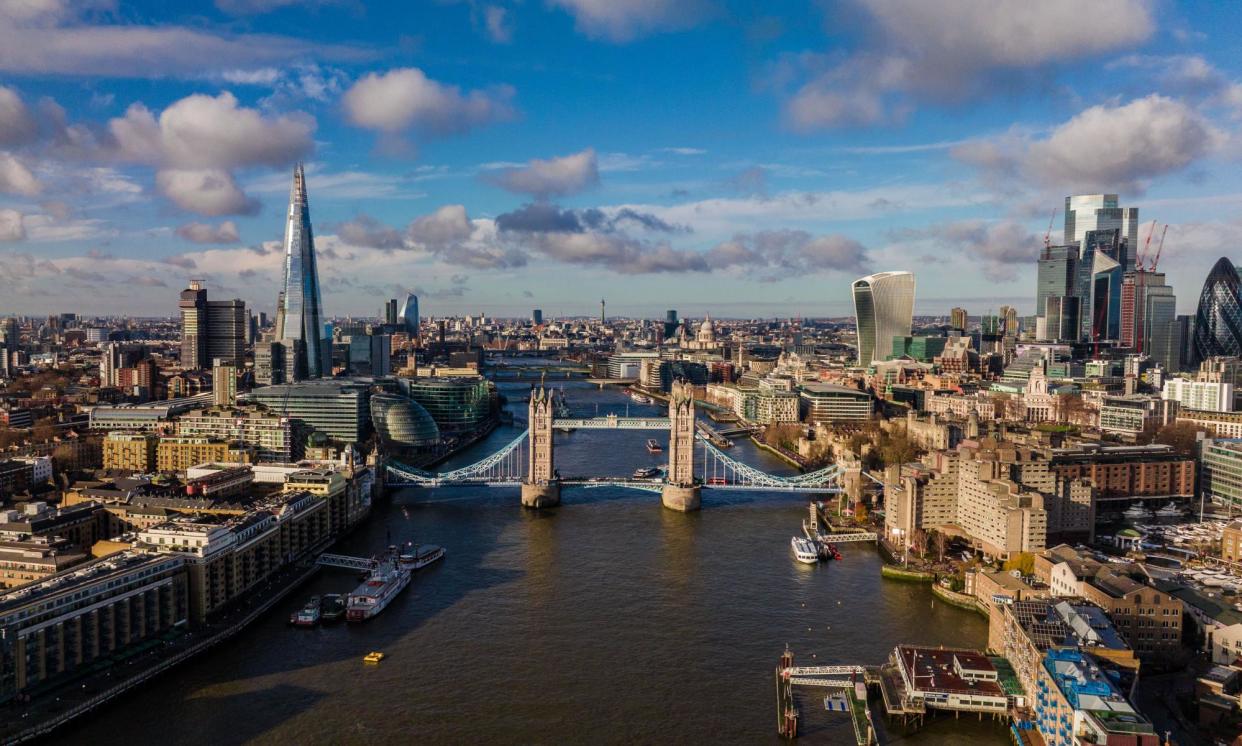Ulez helped London cut road pollution faster than rest of UK, report says

Sadiq Khan has hailed what he said was remarkable progress in improving London’s air quality under his tenure as mayor, after a study showed roadside pollutant levels falling faster in the city than elsewhere in the UK.
The report, produced by the Greater London Authority (GLA) and Transport for London (TfL), said a good proportion of the improvement was the result of the ultra-low emission zone (Ulez), which was extended to all London boroughs last summer.
The expansion of the clean air zone, which requires older and more polluting vehicles to pay a £12.50 daily charge, was fiercely opposed by the Tory central government, and even the Labour leader, Keir Starmer, asked Khan to reconsider the move.
The Labour mayor is keen to push his environmental credentials before he stands for re-election in May seeking a third term, and amid criticism that his flagship infrastructure project, the Silvertown road tunnel under the Thames, could worsen air quality.
The GLA/TfL report will provide valuable ammunition for Khan and Labour in making the case for the expanded Ulez, which his Conservative opponent, Susan Hall, has pledged to reverse if she wins.
According to the research, roadside levels of NO2 pollutants fell by 49% between 2016 and 2023, and were lower last year even than in 2020, when there were extended periods of lockdown during the Covid pandemic.
The fall came despite London’s population having risen by more than a million people, the report said, and was a greater fall than in England as a whole with 35%, Scotland 39%, Wales 31% and Northern Ireland 27%.
The number of air quality monitoring sites in the capital showing NO2 levels beyond the UK’s annual legal limit fell from 56 in 2016 to five in 2023.
Overall air pollution concentrations have fallen by 65% in central London since 2016, 53% in inner London and 45% in outer London.
Much of the benefit has come from the Ulez, which was launched in central London in 2019 and then expanded in 2021 and last summer, but improvements have also come from initiatives such as more electric and hybrid buses, and the wider shift towards electric or less-polluting private vehicles, a change the Ulez has helped.
Coinciding with the report, Khan’s office has announced additional clean air schemes, noting that pollution levels in the city are still forecast to exceed World Health Organization guidelines even by 2030.
A new £5.3m fund, shared between 17 boroughs, includes efforts to reduce emissions from canal and river boats, and to limit commercial vehicles having their engines idling while stationary.
The report does not, however, make any mention of the potential impact of the Silvertown tunnel, the first new road link across the Thames in 30 years, between Greenwich and Newham in east London.
Campaigners say it will worsen pollution in one of the smoggiest parts of the city. City hall argues that the crossing, which will be tolled, will speed up bus services and reduce pollution levels by easing congestion.
Khan said: “Every Londoner should be proud of the remarkable progress we’ve made in improving our air quality since 2016. Together we’ve cut roadside nitrogen dioxide pollution in half and achieved the lowest annual levels on record.
“London is leading the way, cleaning up our air at a much faster rate than the rest of the UK. Clean air matters for so many reasons – helping to increase children’s life expectancy, reduce hospital admissions for asthma and serious lung conditions, and enable people to lead longer, healthier lives.”
Henry Gregg from Asthma and Lung UK said: “Despite some improvements to the public transport network in London, more action is still needed in many toxic air hotspots, especially in outer boroughs.”


